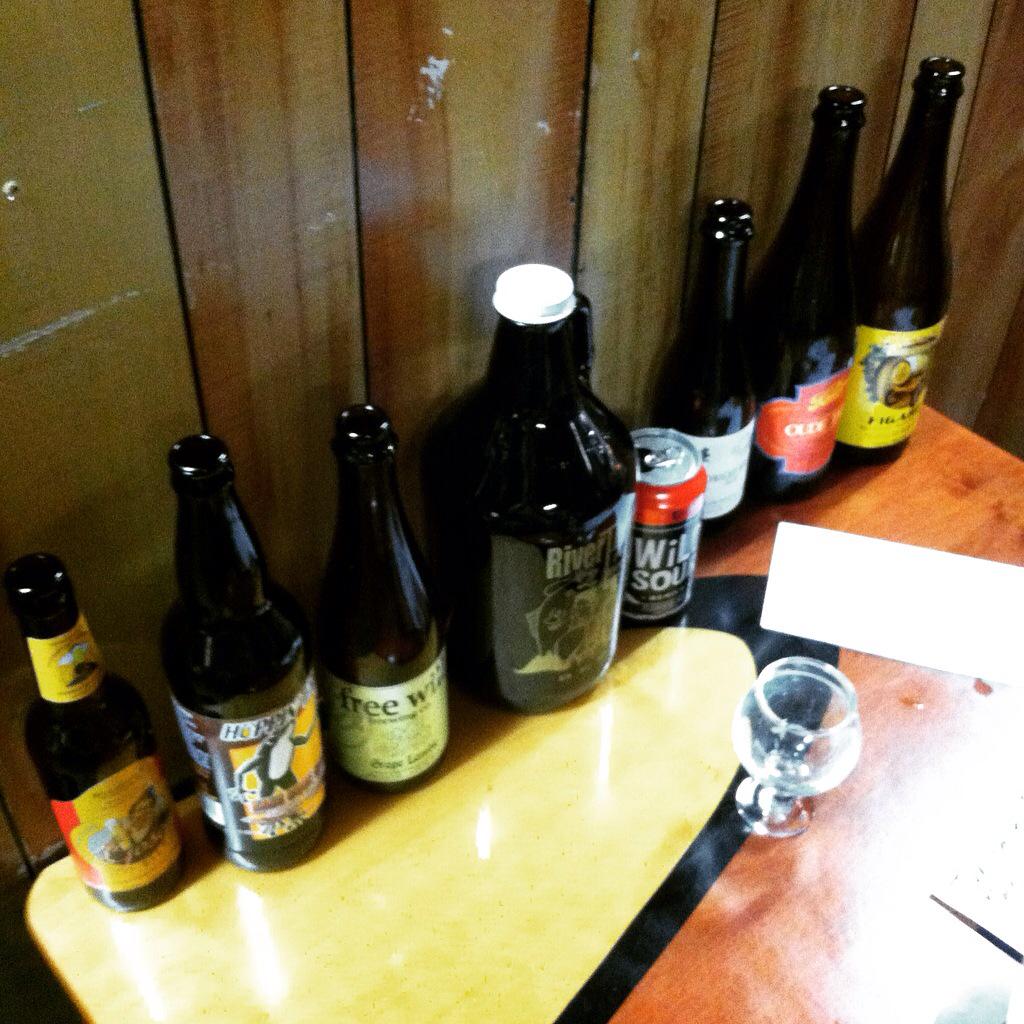Is it me, or is the east coast IPA slowly disappearing? The maltier, orangier east coast style is
creeping up the “Endangered Styles” list bit by bit. In the IPA race, it seems that west coast
(big hop aroma & bitterness, low malt profile), session (a low gravity west
coast mutation), & the newer “Vermont-style” (back-loaded with hops for
juicy aroma & flavor, with low
bitterness) are competing for the hearts & minds of the hop-craving
populace. The old guard east coast IPA,
a stepping stone from the English ancestors with more crystal malt, a thicker
base, & a darker body, is falling out of favor.
This is a little sensationalized – there are still plenty of
east coast IPAs being sold (Victory’s flagship, Hop Devil, sure isn’t hurting). But as far as what the kids are going for in
an IPA these days, the bright, lighter, juicier hop bombs are in their hey day. Ask for feedback on how to improve an IPA,
& the answer will most likely be moving toward the modern model, throw in
some Mosaic, Citra, lighten the color, trim the toffee/bready notes, & you’re
getting there. While there’s more
breadth in this style than ever before, there also seems to be a gradual streamlining
in the direction of some Socratic ideal, the collective unconscious’s perfect
schema of an IPA.
Is it Heady Topper?
Maybe. The rating sites would
lead you to this conclusion, & plenty of brewers are now fashioning their
hoppy offerings in this mold. Or is it
Pliny? Or something from Hill Farmstead,
or some other fill-in-the-blank brewery that’s catching the eyes of the beer
geek populi. I don’t know if we’ve
cracked the code yet, but we’re certainly on our way.
The idea that there can be a “perfect” beer of any stripe is,
to me, both distasteful & really intriguing, from a theoretical standpoint. Rating sites & critical systems like the
Beer Judge Certification Program imply that such an absolute exists. What does a 50 point American IPA look,
smell, & taste like? It’s also a
pretty fallible idea, really – beer, like anything else, will continue to
evolve until a meteor wipes it off the face of the Earth. People are already “over” the milestone
examples I’ve mentioned & onto the next thing, which will soon also be
passe.
I say “distasteful” because I value diversity. It’s a little sad to think that brewers might
throw out old recipes in misguided attempts to keep up with the times, though I
get that sharks need to keep moving. The
collective palate shifts, & businesses need to stay on top of what the
public demands. I pity the classic beers
that end up in the vault, though, & there’s no reason that the same beer
couldn’t do for someone today what it did for someone else ten years ago. There are more drinkers of good beer now than
ever, & I believe that we can bear the breadth of styles & tastes the
supply side can yield.
Speaking of Pliny - I give Vinnie Cilurzo a lot of credit
for not changing the recipe. After 15
years, Pliny still remains industry standard for double IPAs, is
well-respected, & still commands a cult following. I can imagine the temptation is there to
throw in whatever hops are making tod’say geeks drool, but Vinnie has affirmed
that Pliny is what it is, & hasn’t been updated to fit market trends.
So maybe I’m making a mountain out of a molehill, &
there’s not as much obsolescence afoot as I imagine. Part of me thrills at seeing the popular
taste evolve & embrace different flavors that weren’t out a few years
ago. I just hate to see traditions &
styles fall by the wayside, victim to the tides of public demand (as I’m sure
the hop-averse can attest to) & those who can’t stand drinking the same
beer twice. So let’s not jettison
something just because it’s been around for more than five minutes. There is strength in diversity, &
cultures thrive when there’s as much variety as possible. Even if you might have already been there
& done that, someone else down the line is getting their first taste of
something great.


